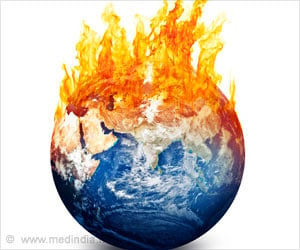Extreme heatwaves are prolonged periods of intense heat, often worsened by dry soil and climate shifts.

A simple model for estimating regional warming patterns and heatwaves in South Asia
Go to source). The study, recently published in the prestigious Journal of Geophysical Research: Atmospheres, examined the intense heatwaves that scorched India, Pakistan, and Afghanistan during March and April 2022 months that saw temperatures soar far beyond seasonal norms.
‘#SouthAsian #summers can be intense! Stay cool by hydrating with water, lassi, & coconut water. Opt for light, breathable cottons and seek shade during peak hours. #heatwaves’





Lead author Roshan Jha, a doctoral scholar at IIT Bombay's Centre for Climate Studies, explained that the March heatwave was primarily influenced by a rare amplification of atmospheric Rossby waves. These large, high-altitude meanders in wind patterns typically resemble the bends of a river and can greatly influence weather systems. Rossby Waves Amplification Drove the March Heatwave
"Our analysis shows that the March heatwave was driven by a sudden spike in the amplitude of short-lived Rossby waves," said Jha. "As high-altitude westerly winds near the poles - known as the extratropical jet stream, transferred energy to the subtropical jet stream closer to the equator, the waves intensified, amplifying heat across the region."In contrast, the team found that the extreme heat in April followed a different path. Instead of atmospheric wave activity, the heatwave was largely a result of very dry soil conditions and heat being advected or transported - from the arid regions of north-western Pakistan and Afghanistan into India.
"What's particularly alarming is the domino effect," said coauthor Prof. Arpita Mondal, Associate Professor at IIT Bombay. "The dry conditions in April were actually set in motion by the March heatwave, which had already desiccated the land with prolonged clear skies and high temperatures."
She further explained the mechanics of this phenomenon: "When the soil has moisture, the sun's energy is partly used to evaporate that moisture. But when the ground is already dry, all that energy goes directly into heating the air, making conditions even more extreme."
Advertisement
The researchers emphasized the urgent need for better understanding of these processes to strengthen forecasting capabilities across South Asia, a region highly vulnerable to the impacts of extreme heat.
As South Asia continues to grapple with the mounting challenges of climate change, the study serves as a crucial reminder of the layered and interconnected forces shaping our environment - and the vital role of scientific research in preparing for what lies ahead.
Reference:
- A simple model for estimating regional warming patterns and heatwaves in South Asia - (https://www.che.iitb.ac.in/mtech-project-topic/simple-model-estimating-regional-warming-patterns-and-heatwaves-south-asia)
Source-Medindia









